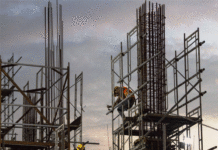New Delhi, March 19, 2020: About 200 years ago, the Industrial revolution and the invention of new building materials and new forms of energy radically changed the urban pattern. The discovery of engines, motor car, trains and petrol, diesel, etc in 1859, revolutionized the transport system and triggered the development of cities. The lifts, concrete, steel and electricity gave birth to high-rise buildings. This set-in motion a wave of upsizing the urban economy as manifested by global cities- New York, Chicago, Hong Kong, Shanghai, Singapore, London, etc. However, Indian cities missed the bus and perpetuated with 19th century planning approaches and construction. As a result, there is a stagnation in job market, shortages of infrastructure services, connectivity and housing.
The sustainable urbanism starts with reducing the consumption of land and natural resources and expanding access to urban services and shelter. This requires urban densification and vertical urbanism which lead to travel reduction, economy of services and conservation of agricultural areas.
The book ‘Tall Buildings and Vertical Urbanism’ by A.K. Jain discusses the raison-de-etre for tall buildings and vertical eco-system. The booklooks at the evolution of tall buildings and their relationship with the urban growth, land, economy, climate and ecology. Various iconic and landmark examples explain the context and processes, including design, structure, construction, façades, services, climatic systems and safety from fire and other risks. More than 165 visuals and flowing language make the reading interesting. It aims to trigger a debate for radical changes in the field of architecture, urbanism, engineering and real estate development.
JDS Sodhi
Architect Planner
New Delhi
Ph: 9818130441
Corporate Comm India (CCI Newswire)



















